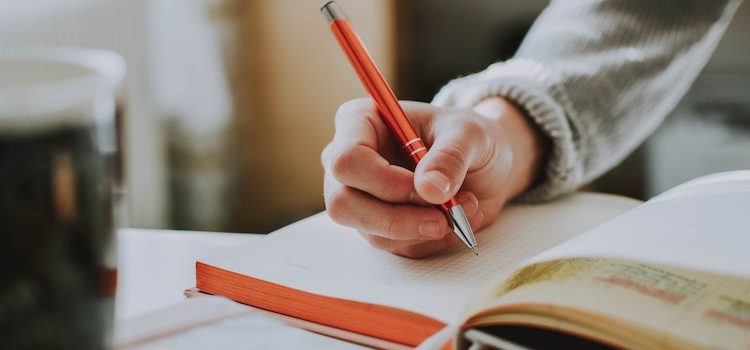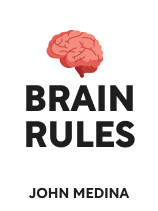

This article is an excerpt from the Shortform book guide to "Brain Rules" by John Medina. Shortform has the world's best summaries and analyses of books you should be reading.
Like this article? Sign up for a free trial here .
What is multisensory learning? Why do students learn better when using multiple senses simultaneously?
Dr. John Medina theorizes that a multi-sensory environment impacts the development of the brain, and the senses work together to absorb information. He further explains the concept of multisensory learning and the benefits of implementing it in schools.
Here’s why you should use multisensory learning in the classroom.
We Learn Best When Using Multiple Senses
Dr. Medina contends that, because we evolved to live in a multi-sensory world, using more than one sense at once improves our learning. He describes why our senses improve when we combine them and how using multiple senses benefits learning specifically. He also shares ideas for incorporating multi-sensory learning into your life.
Our Senses Improve When We Use Them Together
Because the environments we live in have multiple, simultaneous sensory stimuli, our brains evolved to absorb and make sense of numerous sources of information at the same time. Since our senses have evolved to work together in this way, when we use one sense, others are automatically activated.
Medina describes a few studies that provide evidence for this phenomenon. In one, researchers found a connection between sight and sound by showing subjects silent videos of people speaking. When watching these videos, the auditory centers of their brains lit up, in addition to the visual centers. This indicates that sight influences sound: When we see an image associated with sound, like talking, our brains automatically engage our sense of hearing.
Further, Medina notes that one sense can even improve another. One study Medina describes shows this phenomenon in action. Researchers showed subjects a flickering light that gradually grew dimmer. When a sound was paired with the flickering, they were able to see the light flickering for much longer.
Using Multiple Senses Benefits Learning
Medina argues that because we’ve evolved to process multiple senses at once, our brains learn and absorb information best when it involves more than one sense. Studies show that people who learn using multiple senses retain information better than those who used only one sense—even 20 years after first learning the information.
In addition to remembering information better, multisensory learners also showed much greater problem-solving skills than single-sense learners. Some researchers think this is because the brain retains memories better when you use elaborative processing, which is committing information to memory using multiple techniques. For example, if you remember a recipe, you probably did more than just read it. You likely remember it because you engaged the senses of smell, touch, and taste by cooking it.
If you’re learning or teaching something new, then, it can be helpful to use multiple senses. For example, if you’re learning a new language, you could reinforce it by watching films in that language, in addition to reading and speaking it. Using only one sense, on the other hand, can make learning more difficult. Listening to a lecture, for instance, might leave you less likely to retain information than watching a documentary, since it only involves auditory stimuli.
| Teaching Reading With Multiple Senses Since multisensory learning helps to retain information over time, many educators use it when teaching children important skills. Reading is one skill that can benefit from multisensory learning, and there are several techniques for engaging the senses of touch, sight, and sound during reading lessons: Tactile writing. Have students write words using their hands in a soft material, like sand or shaving cream. As they write the words, instruct them to sound out each letter. Tapping out words. Have students tap out each sound of a word using their thumb and fingers—for example, for the word “dog,” tap the thumb to the forefinger on “d,” the thumb to the middle finger on “o,” and the thumb to the ring finger on “g.” Then they can put the sounds together. Reading together. While a student reads a book, read it aloud with them. You can also ask them to interact with the book by underlining or circling words—for example, they could circle all the verbs, or underline words they don’t know. |
Ideas for Using Multiple Senses
Medina gives several recommendations for incorporating multisensory learning in education and business. If you’re giving a presentation at work or in school, Medina recommends making it a multimedia presentation. For example, Medina, as a college professor, would use the same scent in his classroom during both a lecture and the subsequent test. The practice-led students to perform better. Businesses that are training employees can also use this technique to improve the employees’ memory of the new information.
(Shortform note: Some of the best teachers in the United States frequently use multisensory learning techniques. Among recent winners and finalists of the National Teacher of the Year awards, some strategies teachers use include having students create advertisements to understand scientific concepts, or using musical concepts to help students understand complex literature. These teachers’ success shows that multisensory learning is a great way to engage a class and help them learn concepts.)
Medina also recommends retailers engage in sensory branding, which pairs scents with sales, as using the right scents has been shown to motivate people to make purchases. For example, if you run a candy store, you could fill the store with scents of chocolate and caramel to encourage people to buy more candy. (Shortform note: While using scent can improve a brand’s sales, using even more senses in branding can be even more effective. For example, a brand could create a signature sound (hearing), use a distinctive logo (sight), and partner with restaurants (taste).)

———End of Preview———
Like what you just read? Read the rest of the world's best book summary and analysis of John Medina's "Brain Rules" at Shortform .
Here's what you'll find in our full Brain Rules summary :
- An explanation of how the brain works in a simple and accessible way
- The 12 rules that help fulfill the core functions of the brain
- How to improve your thinking and learning abilities






